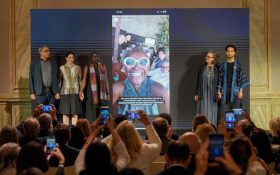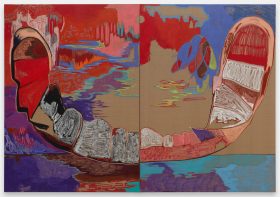Nietzche wrote that in every man there is a playful child. He also said that there are none more serious than a child at play. So when artists turn their hand to making ‘playful art’, the audience can be sure it has been invited to experience with the rigorous intellectualism of a child.
The Tate Modern has a reputation for being a gallery of the people. In the past it has been accused of contributing to the “dumbing down” of high culture and over-simplifying complex theoretical approaches to art (others have suggested the Tate could do with dumbing down in some areas). But for all the slights and jabs it has had to weather over the years, the Tate Modern has definitely helped put the F back into the fun for art appreciation. For evidence of how it has managed to do this we need look no further than the entrance, or rather, the turbine hall.
Until the 9th April 2007 visitors to the Tate Modern will be able to unleash their inner child as they take off on Belgian born artist Carsten Höller’s gigantic slippery slides. The five-storey high metal slides, described by Guardian journalist Lynn Barber as “lovely – silver arabesques swooping through the cavernous gloom”, have quickly become one of the most popular installations (attractions?) ever housed within the London gallery. Their appearance (giant metal snakes cavorting and twisting in what would otherwise be an empty space) makes them externally fascinating. But it is their power to transform those brave enough to slide down them that most interests the artist.
In an interview with Barber in the Guardian, Höller says, “I think a slide can change our perception of space and speed. Our brain structure is obviously affected by this vertigo effect and things that seem to be organised in a certain way can be reorganised and experienced in another order…” He says that taking a ride on the slide is like throwing caution to the wind. The people are “let loose. They are finally free,” he says.
It is not the first time he has exhibited at the Tate Modern. In 2003 Höller participated in the Common Wealth exhibition, along with four other artists from Europe and South America, which included his Frisbee House 2000 installation – “a tent-like structure that can be entered, and is filled with 30 frisbees that visitors can throw to each other or, through holes in the fabric, to unseen participants in the gallery.”
During a conversation with arts lecturer Claire Bishop, Höller revealed that he hopes his work “disturbs his viewers’ assumptions with installations or interactive sculptures that deliberately but often playfully induce doubts and confusion.” Bishop is intrigued by both the aesthetic and philosophical correlations and corrollaries of Holler’s position and the Internet hosts an impressive amount of related discourse – sadly the playful nature of this investigation prevents any detailed analysis of the fine points being made on both sides of the debate regarding the premise by which culture is constructed.
The most obviously playful thing about Höller’s installations is that they are interactive. Viewers are not segregated from the work by a thick rope attached to flimsy metal poles, they are invited to immerse themselves visually, physically, and emotionally with the creation. In a sense Höller invites the audience to experience his work as naturally as a child experiences everything – in a sense he is saying, if you have the urge to touch it, go right ahead, it’s alright, don’t be afraid. His approach, like his artwork, is playful. Even during the installation of the slides Höller made no effort, as other artists exhibiting in the turbine hall have done in the past, to hide what he was up to. “I don’t like the idea of surprise really,” he says, “The surprise will be how it looks and how it appeals to people, both people watching and people going down. There is a lot of fun in watching other people.”
Thanks to Höller and the Tate Modern words like “surprise” and “fun” are able, until April at least, to be dropped into serious conversations about art without attracting (too many) raised eyebrows. And anyone who fails to grasp the simple, childish joy of interacting with playful art is just not taking it seriously enough.




